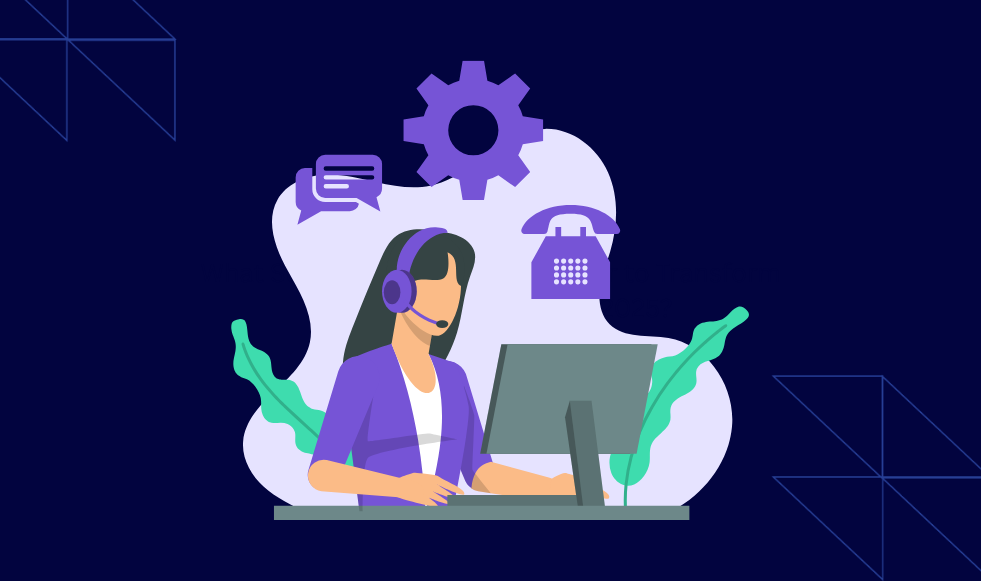AI in customer experience is increasingly being leveraged by businesses to reach out to customers proactively, rather than leaving them hunkering down to find customer support. Modern businesses understand the importance of integrating AI into their CX tools to personalize the CX experience of customers. Furthermore, AI tools use predictive analysis to understand customer behavior and provide important intel to human CX agents on the most effective way of responding to them. Moreover, AI can automate routine tasks and make sure that only the most complex issues needing human intervention are escalated to tier-2 and tier-3 levels of CX service.
Unable to fathom the extent to which AI can help upgrade your call center? Let us take a look at a few research findings to understand the level of current AI usage in CX.
- As many as 69% businesses think that they have an improved customer service after AI integration, and 55% comment that they have achieved a reduction in waiting time for customers
- AI-driven customer services have made automation the order of the day, reducing operational costs by 30%
Therefore, it is no surprise that businesses are opting for automation of repetitive tasks to achieve workflow optimization and customer satisfaction.
In this article, let us take a look at what inbound call centers are needed for, what challenges they face, and how AI-powered CX can take their performance to a new level in 2025.
What Functions Do Inbound Call Centers Serve?

Inbound call centers are the primary contact points of the brand with the customers. Inbound call centers carry out several functions that keep the CX of a business up and running, and these are some of them:
- Provide answers to general queries raised by customers so that they can proceed to buy a product or troubleshoot an issue concerning a service
- Resolve billing-related discrepancies and issue refunds, and also process an order if something does not seem to work at the customer’s end
- Offer personalized call responses that provide clarity regarding company policies, and make a cut-out sales pitch by seizing the moment
- Gather feedback on a particular product so that the company database has enough information on the performance metrics of its repository
- Amicably settle any grievances that the customer might have so that brand goodwill and customer satisfaction can be enhanced
Inbound call centers are the best mode of communication when it comes to urgent resolution of problems, and more than half of the customers prefer calling over chat or email. Therefore, your business must have a dedicated inbound call center to resolve customer issues in 2025.
What Challenges Do Inbound Call Centers Face?

Inbound call centers engender two sets of challenges: one for the CX agents, and the other for the customers who are making the calls. Let us take a look at both of them.
Challenges for CX Agents
These are the challenges faced by CX agents stationed at the inbound call center service:
- High stress levels due to the demanding nature of the job, performing repetitive tasks, and a low work-life balance
- Interactions with customers can be draining, especially when the customer is frustrated with the non-resolution of a grievance
- CX agents often find themselves in a soup, with inadequate resources or technical shortcomings to carry out a function properly, as reported by 42% of them
- Customer service agents need to be super-efficient with technical aspects of their work because they will often have to work within tight schedules caused by downtimes
- Juggling customer data while providing them with an empathetic, personalized service often becomes burdensome for CX agents
- Performance pressure is also a factor often overlooked, as with higher FRR (First Response Rates), business costs increase, causing a negative performance metric for agents
Challenges for Customers
Customers typically face these challenges when they contact call centers:
- Listening to automated voices greeting them but offering no real solutions to their problems, often due to high call volumes and no available CX agent
- Language barriers keep them from explaining their problem properly, or poor comprehension on the part of the customer service agent
- Having to repeat their issues with multiple CX agents and still not reaching within an inch of a solution
Thus, in 2025, your business needs a foolproof solution, and a probable one is the integration of AI in customer experience.
What Solutions Does AI-tech Offer to Transform Inbound Call Centers in 2025?

AI technology, when integrated with CX, can transform the way inbound calls are handled centers work, and do away with most challenges that customers and CX agents face.
Hyper-Personalization
Personalization is the first thing that is retained by AI, even when ensuring call center automation. It solves the chaos of the customer having to reiterate their concerns over and over again and helps the brand build a rapport with them. AI can analyze past data on a customer and pick out key details about them, which, when incorporated by the CX agent in the interaction, makes the customer recognized and valued.
Language Support
Virtual assistants, with enabled multilingual support, can cause a world of good for the customer. A lot of technical terms are difficult to understand in a language different from one’s mother tongue, and multilingual support deals with this issue to a large extent.
Intelligent Call Routing
Call routing is something that AI-tech can effectively achieve when it is integrated with CX. When it is detected by the system that the customer’s issues are complex enough to merit a tier-2 or tier-3 assistance, the call is routed to the competent CX agent, who then takes up the matter from there. This feature does away with call waiting times and helps reduce customer frustration and enhance customer satisfaction.
